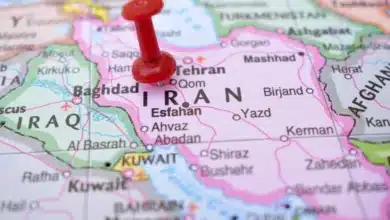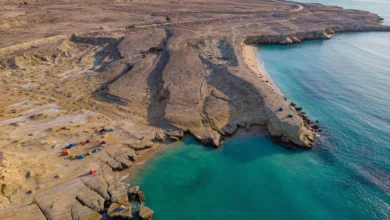Temple of Anahita: Dive into Ancient Worship
Uncover the Mystique of the Anahita Temple in Kangavar of Kermanshah
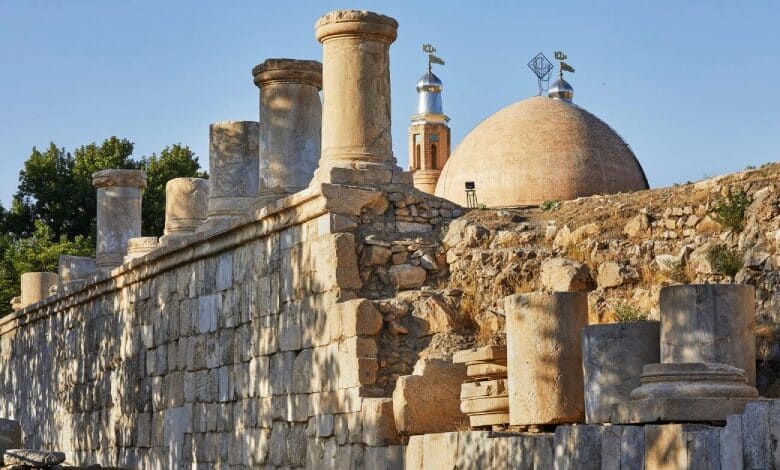
The Temple of Anahita is a historic site in Kangavar, in the Kermanshah province of Iran. It was registered as one of Iran’s first national heritage sites in 1931. The temple is the second-largest stone monument in Iran after Persepolis and holds historical significance from the Achaemenid, Arsacid, and Sassanian periods.
Dedicated to Anahita, the goddess of water and fertility, the temple served as a center for religious worship. Today, it still attracts visitors worldwide, offering a glimpse into Iran’s rich cultural and spiritual traditions.
Contents
Historical background of the Temple of Anahita
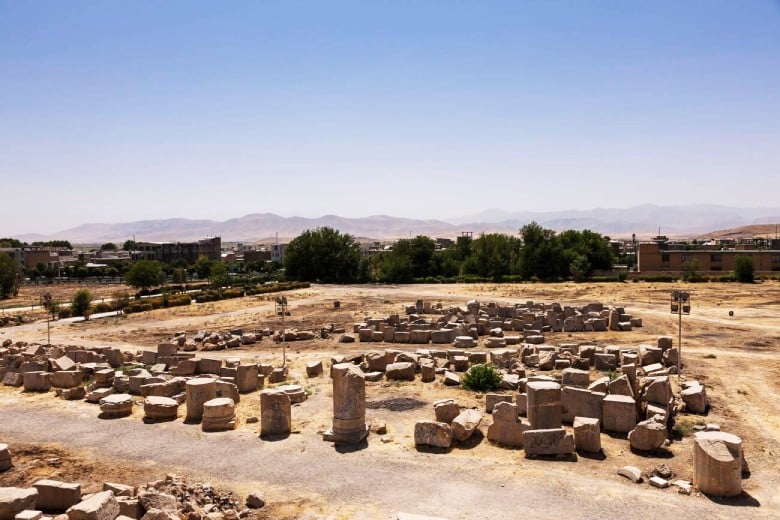
Traveling back in time and exploring ancient temples to understand their significance is captivating. The Temple of Anahita, also known as the Complex of Kangavar, is crucial for comprehending the culture and history of the region. While the exact date of construction is uncertain, some archaeologists and historians believe that the temple was built during the Achaemenid or Parthian reign in Persia and Medes (modern-day Iran) and later reconstructed during the Sasanian periods to honor the goddess of water in the pre-Islamic era.
The historical significance of Anahita is connected with water, fertility, and beauty, emphasizing the awe of Anahita as documented in ancient Avestan texts and the importance of the Anahita cult in ancient Iran. The Temple of Anahita was a physical representation of devotion to the goddess and a center for religious ceremonies, showing the influence of Greek and Roman religious practices on the way of life in ancient Iran. Gradually, Anahita became the symbol of Persian and Median cultural and spiritual identity, profoundly influencing people’s daily habits and societal values, as seen in the remains of their craftsmanship, art, and building constructions.
Over time, Anahita became more influential when she was associated with Mithra, known as the goddess of wisdom and light in the religion of Mithraism– a Roman mystery religion-inspired by Zoroastrian deities from Persia and Medes. This connection illustrates the influence of Persian and Greco-Roman ritual practices on ancient nations’ culture, language, and governance.
Given Iran’s strategic location connecting the West and East, Anahita was able to make her way to the East. For instance, the Hindu goddess Saraswati is identified as the goddess Anahita. This influence is seen in the many temples dedicated to Saraswati in India, highlighting the cultural and religious ties between the two regions.
The Architecture of the Temple of Anahita
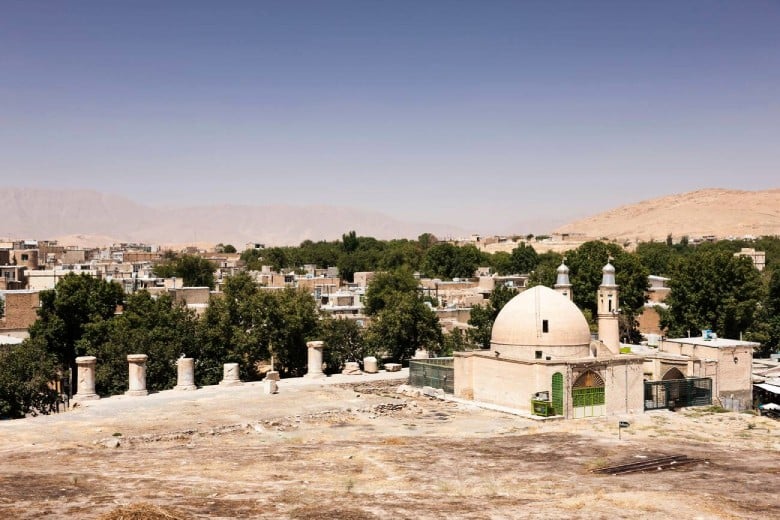
The Temple of Anahita is located on a hilltop in the Kangavar Plain, offering a stunning panoramic view. Its specific layout aimed to show the goddess Anahita’s authority and power over natural forces and her ability to influence nature and protect against disasters.
The temple’s architecture incorporates unique elements and motifs, sparking debate among scholars about its origins. Despite differing opinions, the temple’s design and the presence of the Anahita Goddess statue make it a significant cultural landmark in Iran. Let’s take a deeper dive into the temple’s design.
A row of stone columns stands at the top of this historical monument, each with a height of 54.2 meters. You can enter the building either through a double staircase on the southern side or the single staircase on the northeast. The stone channels directed the river water precisely and spectacularly to the reservoir in the center of the Anahita temple.
The method of water distribution and flow within the temple is one of the engineering marvels of that era, showcasing this sacred element in the most beautiful way possible. Corridors were installed on all four sides of the Anahita temple, channeling water back and forth to the center of the temple. On both sides above the Anahita temple, the heads of four bulls are positioned facing each other. In the center of the temple, there is a space where water has collected from these streams, filling a small pool approximately ten by 10 meters and 20 centimeters deep.
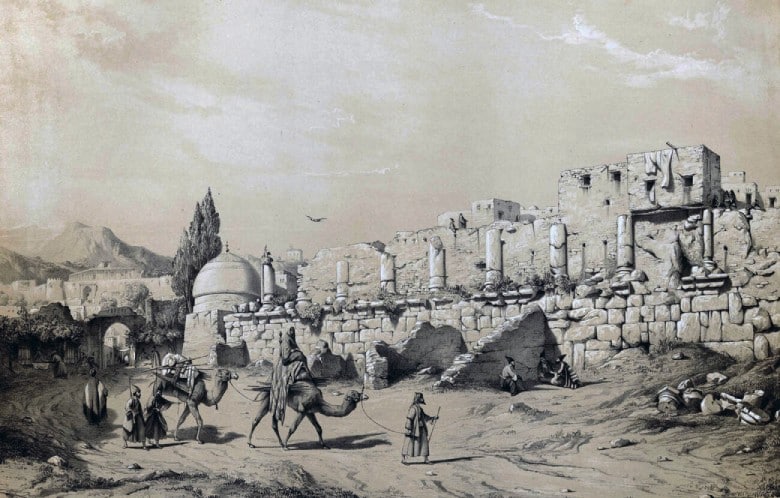
On every wall, a row of thick columns is situated; the height of the columns built in this massive historical structure is three times their diameter, which is considered one of the exciting and unique aspects of the design and architecture of the temple. Stone and gypsum mortar were used to construct these walls, and the builders of this structure decorated its exterior with cut stones arranged in a dry-stone fashion. In the southern section of the Anahita Temple, there are two rows of steps, which experts in historic buildings estimate to be 154 meters long. The architects have designed two to five steps in each block, with 26 steps in the eastern and 21 in the western steps.
Another architectural feature considered in the construction of the Anahita Temple is the presence of a platform (rock) in the center, orientated east-west, measuring 94 meters in length, 5.9 meters in width, and nearly 4 meters in height, which is remarkable and commendable in its own right. This platform is constructed using large stones covered with a layer of plaster.
Thick walls, grand entrance stairs, imposing columns, a water distribution system, and remarkable engineering achievements for its time—its sturdy foundation, constructed from stone carcasses and plaster mortar, adorned with intricate carvings and inscriptions—and the grand entrance stairs, crafted from stone blocks with meticulous detailing that lead sightseers to the central platform represent religious and daily life scenes.
Best Time to Visit the Temple of Anahita
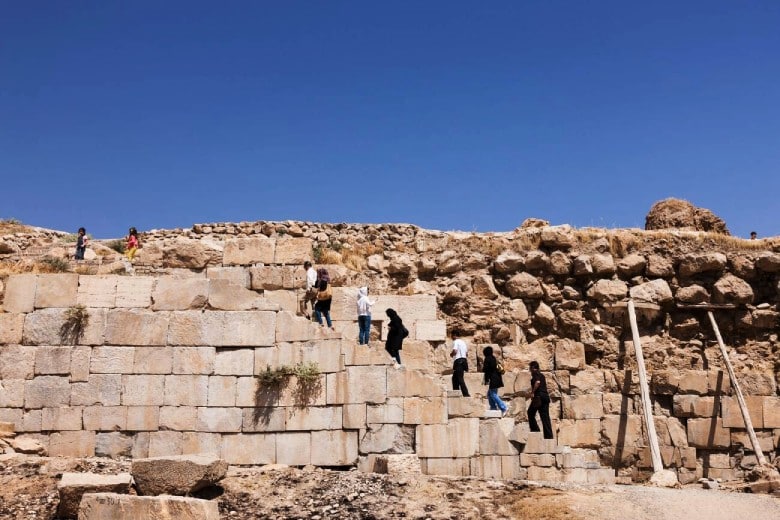
The best time to visit the Anahita Temple is spring and autumn. However, the temple is open to the public all year round except for critical religious occasions. The visiting hours are from 8 a.m. to 7 p.m., allowing visitors ample time to explore and appreciate the temple’s historical and architectural wonders during daylight hours.
Book Iran Flights
Buy Iran flight tickets at the lowest price
Explore Iran’s culture and history with affordable and reliable flight tickets.
The Nearby attractions of the Temple of Anahita
- Imamzadeh Ibrahim: 150 meters
- Godin Tepe: 14.8 km
- Goor-Dakhmeh Sahneh: 35.5 km
- Biston Historical Complex: 56.6 km
The Nearby Accommodations of the Temple of Anahita
- Baba Hassan Ecotourism Resort: 30 km
- Golestan Hotel: 31.6 km
- Kosar Hotel: 56 km
FAQs
What was the usage of the Temple of Anahita?
It was dedicated to Anahita, the goddess of water and fertility, and served as a center for religious worship.
Where is the Temple of Anahita located?
The Anahita Temple is a historic site in Kangavar, in the Kermanshah province of Iran.
Where are the hotels near the Temple of Anahita?
Baba Hassan Ecotourism Resort, Golestan Hotel and Kosar Hotel.

